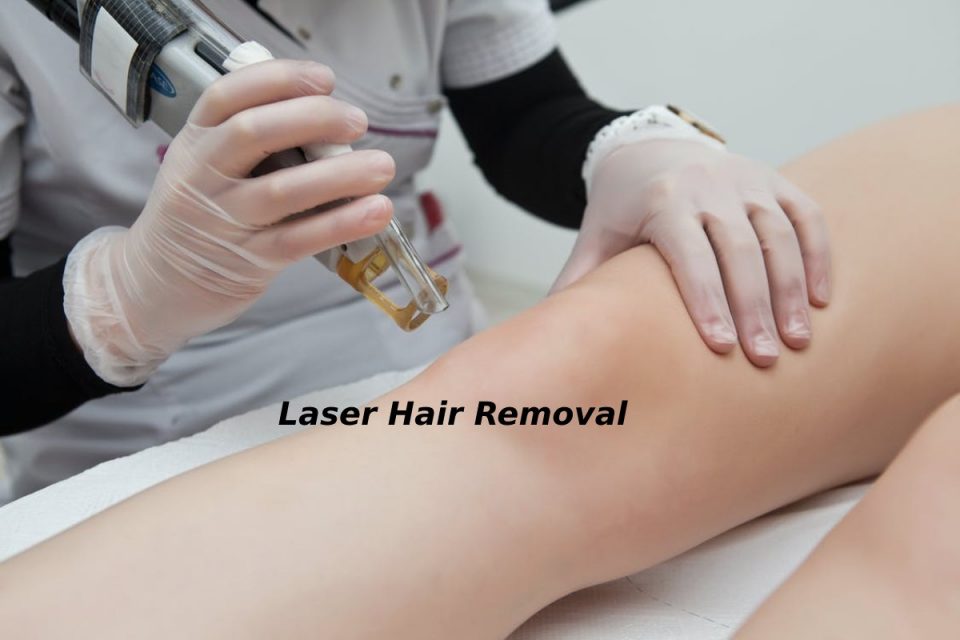Laser hair removal aims to destroy the bulb of the hair. It is the swollen region constituting the base of the hair. In the case of dark hair, this area is pigmented. A laser is a device that emits very particular light because it consists of a single wavelength, defining its monochromatic character.
Depending on this wavelength, specific to each laser, the photons constituting this light will be more or less absorbed by the different structures encountered, mainly depending on the color of these. Thus, pigmented hair represents a brown or black target.
This color strongly absorbs depilatory lasers due to the skin’s natural pigment, melanin. Once absorbed, the light is transformed into heat. It will destroy the hair bulb and ensures the phenomenon of lasting hair removal.
The laser target is, therefore, not the bulb but the pigment that gives it its brown color. It results in two essential consequences: on the one hand, if dark hair can be effectively destroyed, the laser is not operating on non-pigmented hair, such as white, blond, or red hair.
In addition, the light of the laser will not make the difference between the melanin pigment of the bulb and that present in abundance in the epidermis of pigmented skin (naturally pigmented, as a result of a tan).
What is the difference between Lasers and Pulsed Lights?
Several lasers are effective in hair removal. The most common are alexandrite lasers, followed by diode lasers. They are most active on fair skin. Nd-YAG lasers can treat pigmented skin, unlike other devices. However, they require more sessions before achieving a significant and lasting hair reduction and are more painful.
Some practitioners offer to wax with pulsed lights. These are not lasers but are effective provided they are robust, reliable and well used. Because paradoxically, while they are based on simpler technology and have the reputation of being risk-free, they are more challenging to use.
The line between efficiency and risk-taking is narrower, especially with the cheapest devices, usually found among practitioners with little experience.
ALSO READ: NAILS
Is Laser Hair Removal Definitive?
The word “definitive” is a dangerous term, at least excessive, when it comes to laser hair removal. Indeed, after a session, the treated area appears well depilated, and, in theory, all the hair bulbs have been destroyed.
However, the resting, non-pigmented hair bulbs, which have escaped the action of the laser, will gradually activate and give birth to new hairs.
Hair removal will persist for a few weeks before a regrowth appears: a new laser session will then be necessary. A depilation phase will again follow it. Then a new regrowth is less critical than the previous one. As the sessions are repeate, the regrowth will be more discreet.
At the level of the armpits, the jersey, and the belly, it can reasonably be consider that after five or six sessions, the patient can hope to have only weak and discreet hairiness, with a reduction in the number of hairs greater than 80%.
In contrast, the persistent hairs are generally very fine, therefore, not very visible. Unfortunately, at the level of the face, the number of sessions is higher, especially if there are associate hormonal abnormalities. Once a satisfactory result is obtain, a maintenance session every 12 to 18 months can perpetuate the effects.
What are the Risks and Side Effects of Laser Hair Removal?
Laser hair removal is a technique that is now highly practis, in France, probably on several tens of thousands of patients annually. The number of incidents observe, about the actual frequency of this act, is meagre.
Most side effects are mild. The most problematic side effect is burning, follow by skin depigmentation. We saw that the elective target of the hair removal laser was the skin pigment, that is, melanin.
It is therefore understood that if a patient is depilate. At the same time, his skin is tan or pigment. The laser does not differentiate between the pigment of the bulb and that of the skin. There will be an auction at the epidermis level rich in melanin pigment, resulting in a superficial burn.
If it is of moderate intensity, which is most often the case, it will follow a temporary depigmentation. Still, when she can again expose herself to the sun, the patient will see these depigment areas regain their normal pigmentation.
In case of a more extensive burn, there is a risk of permanent depigmentation. More frequent but more benign, hyperpigmentation reflects an inflammatory reaction too strong after the sessions. Treatment should always be Carri out by a doctor or under his direct responsibility. It is up to him to set the parameters of the treatment.
There is currently ambiguity about being able to have the treatment Carrie out by an assistant under the strict control of the doctor. In any case, the treatment cannot be Carrie out by a non-medical person in the absence of any doctor in the vicinity of the patient.


